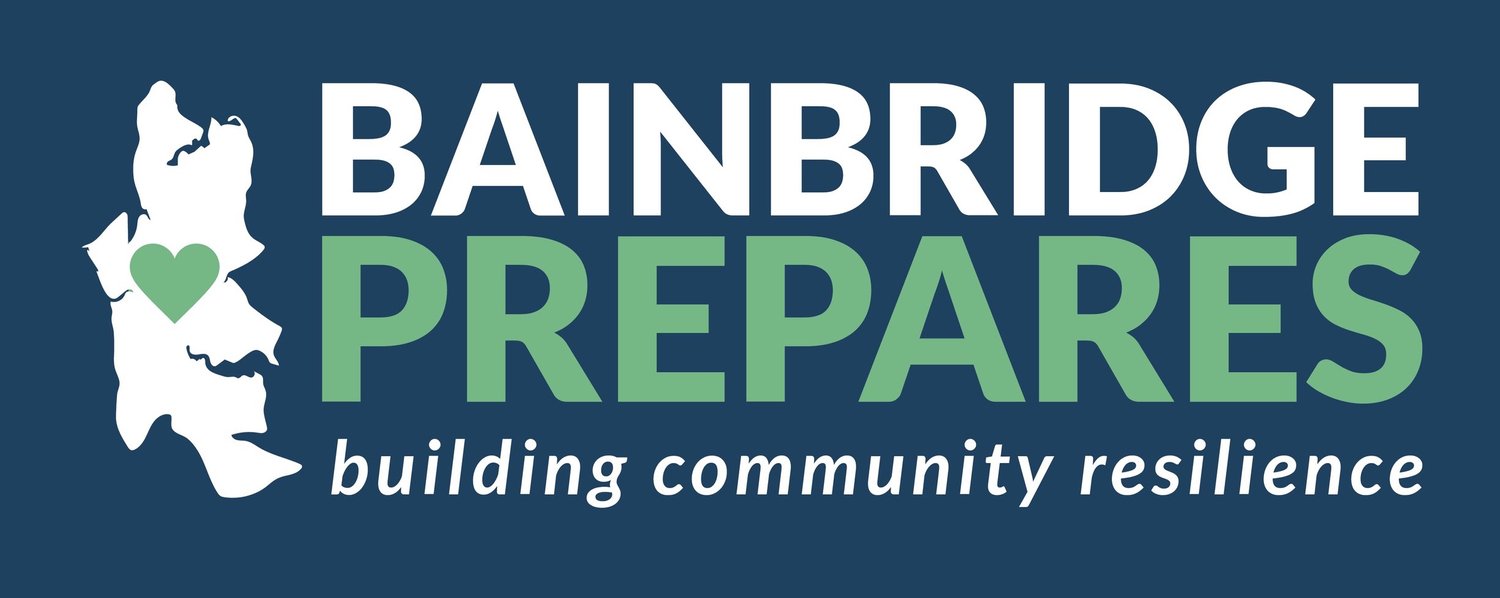New Seattle Fault Tsunami Simulations Raise Concern for Bainbridge

On July 7, the Washington State Geological Survey published the final draft versions of their simulations for tsunamis following a 7.5-magnitude earthquake originating in the Seattle Fault Zone. The new simulations highlight several concerns for Bainbridge Island residents.
Short Time Lag
The first issue of concern is the short time span between an earthquake on the Seattle Fault and the first tsunami waves. For a 7.5-magnitude quake, the expectation is that the first large waves will hit Bainbridge shores within just 2 to 3 minutes. What this means is that, if you're on the shoreline and you feel a quake, don't pause to figure out if it was a Cascadia quake or a Seattle Fault quake. Get to higher ground immediately.
Inundation Risk
The second concern raised is the likelihood of significant inundation on Bainbridge coastline. The simulation shows the following potential depth of flooding in specific locations:
- Fay Bainbridge: 11 feet
- Manitou Beach/Murden Cove: 32 feet
- Yeomalt Point: 24 feet
- Eagle Harbor: 21 feet
- Pritchard Park: 26 feet
Again, what this means is, immediately following a quake, if you're on the shore or on property less than 30 feet above the coastline, get to higher ground: 30 to 40 feet higher.
Strong Current RiskAccompanying the ensuing tsunamis will be an increase in water currents. Again, if you're on the shore or if you're in a boat or kayak, take immediate evasive action after an earthquake. Here are predicted current speeds:
- Port Madison: 19 knots
- Murden Cove: 25+ knots
- Bill Point: 25+ knots
- Blakely Harbor: 25+ knots
- Restoration Point: 25+ knots
- Point White: 25+ knots
- Fletcher Bay (entrance): 25+ knots
- Agate Passage: 25+ knots
Note that current speeds around Bainbridge are often in the -5 to +5 knot range.

 After an earthquake in the Cascadia Subduction zone, two hours will elapse before tsunamis affect the inner waters of Puget Sound with predicted waves of ten feet. But because a Seattle Fault earthquake will be followed swiftly by tsunami waves, don't take the time to determine where the earthquake happened. Get to higher ground immediately once the initial quake stops.
After an earthquake in the Cascadia Subduction zone, two hours will elapse before tsunamis affect the inner waters of Puget Sound with predicted waves of ten feet. But because a Seattle Fault earthquake will be followed swiftly by tsunami waves, don't take the time to determine where the earthquake happened. Get to higher ground immediately once the initial quake stops.

Images by by vynsane and Washington State Geological Survey.
